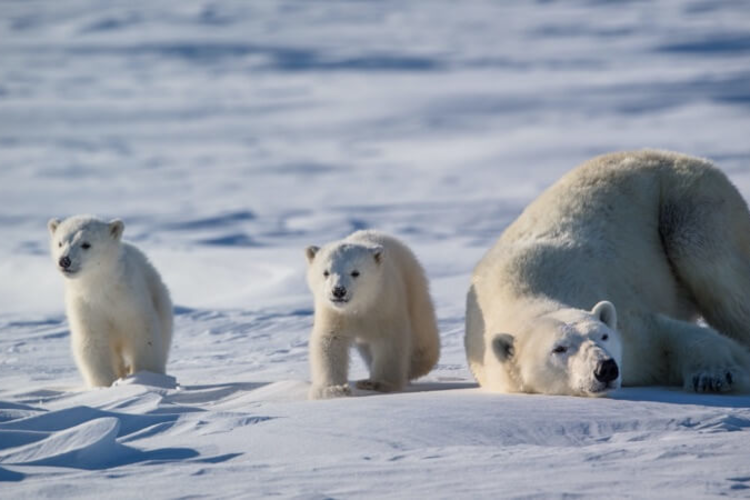Most people understand the basics of global warming and the overall effects it has on the world's polar bears. Unfortunately, rising temperatures are not the only threat. In general, many of us have an impression of the polar bear's natural environment as white and pristine. This is unfortunately a truth with modifications. In reality, polar bears carry very high loads of toxic pollutants, even though most of them live thousands of kilometers from any major cities and industrial areas. This is because a large part of the pollutants that we emit in our everyday life are transported to the Arctic with wind and ocean currents, especially to the polar bear populations in the Barents Sea, northeast Greenland, and the Kara Sea.
Although the different polar bear populations are faced with this problem to a larger or lesser degree, the fact is that there is no longer such a thing as an unpolluted polar bear. Even before the young cubs leave the den with their mother, she has transferred enough pollutants to them via her milk that they are among the most contaminated beings on Earth. However, the effects of this "silent epidemic" are not as easy to see as the effects of climate change —a highly polluted bear may look perfectly healthy at first glance. In fact, most of our understanding of the effects these contaminants have on polar bears come from studies of polar bear organ samples collected by the local hunters in East Greenland during their yearly quota take. (The hunters would fill their quota no matter if these scientific samples were gathered or not, but at least in this way the unfortunate bears can help expand our understanding, allowing us to help their fellow kin.)
What we have learned from these samples is that contaminants have a wide range of harmful effects on the polar bears. However, despite the—by no means exhaustive—list of effects below, we have only begun to scratch the surface. Consisting of up to 200+ different compounds, the chemical cocktail found in any polar bear is complex, as is their combined and often subtle effects. The fine-tuned equilibrium of the bears' hormonal system is affected, including hormones that are essential to growth, reproduction, and metabolism. In addition, the contaminants have been shown to cause shrinking genitalia in the polar bears. Overall, this could be affecting the bears' reproduction and general health. Vitamin levels are affected too, as are some aspects of skull bone structure. Moreover, a high load of contaminants appear to suppress the polar bears' immune system, affecting their ability to fight off disease. Finally, there seems to be effects of the toxins on the bears' nervous system and thus potentially their cognitive skills. All together, these effects may render the polar bear even more vulnerable to any challenges, including those stemming from climate change.
Fortunately, there is a lot you can do to directly help reduce the amount and concentration of all of these harmful chemicals in the environment, in animals as well as in humans. As with all other actions, it starts in your home, with the everyday choices you make: whether we're talking garden pesticides, laundry detergent, clothing brands, or your daily groceries, go for the greener and cleaner brand, produced by an environmentally conscious company.
What also matters is the people you vote to elect and the legislation they propose and push through. If the harmful effects of pollution are something you find important, make sure that whomever you chose to support and vote for also feels this is an essential issue. As the transport of contaminants from southern latitudes to the Arctic takes years there is a certain time lag, but the good news is that legislation works. For example, PCBs are now banned in most countries. As a consequence, a decline of this toxic chemical has recently been shown in polar bears. The same story is true for PFOS, a chemical so harmful that it has actually been shown in humans that women with higher levels of this compound take longer to get pregnant than women with lower levels.
So, long story short: global warming and sea ice loss is not the only adversity faced by polar bears today. Harmful pollutants, originally emitted at latitudes much lower than those inhabited by the polar bears, may also be affecting their long-term survival. Fortunately, the upside is that—as is also the case with climate change—we still possess the power to turn this around. By participating in government, voting, and doing each our part at home in our everyday lives, we can all help decrease pollution.
















